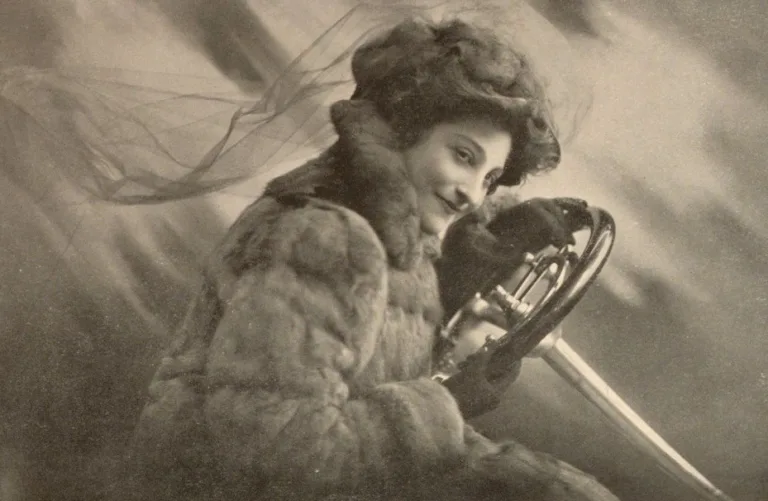Champion Lady Motorist, Inventor of the Rearview Mirror
Can you imagine driving a car without rear or side view mirrors? Rearview mirrors did not become standard on automobiles until 1914, but it was British motoring phenom Dorothy Levitt who came up with the idea five years prior. Levitt, a pioneer of female independence and female motoring, suggested that a small mirror was a necessity in her 1909 booklet titled “The Woman and the Car: A Chatty Little Handbook for all Women Who Motor or Who Want to Motor.”
“The mirror should be fairly large to be really useful, and it is better to have one with a handle,” she wrote. “Just before starting take the glass out of the little drawer and put it into the little flap pocket of the car. You will find it useful to have handy, not only for personal use, but to occasionally hold up to see what is behind you.” She also advised women to carry a handgun; her choice of weapon, a Colt. Levitt’s mirror suggestion was incorporated in a 1914 manual by F.M. Trego, Chief Engineer of The Lincoln Highway Association, entitled “Hints to Transcontinental Tourists Traveling on The Lincoln Highway.”

Levitt’s contribution to the world of female motoring exceeded her practical concept of a rearview mirror. Dorothy Elizabeth Levitt (born Elizabeth Levi) was the first British woman racing driver, holder of the world’s first water speed record and the women’s world land speed record holder. She taught Queen Alexandra and the Royal Princesses how to drive. In 1905, she established the record for the longest drive achieved by a lady driver by driving a De Dion-Bouton from London to Liverpool and back over two days, receiving praise from the press as the Fastest Girl on Earth, and the Champion Lady Motorist of the World.

